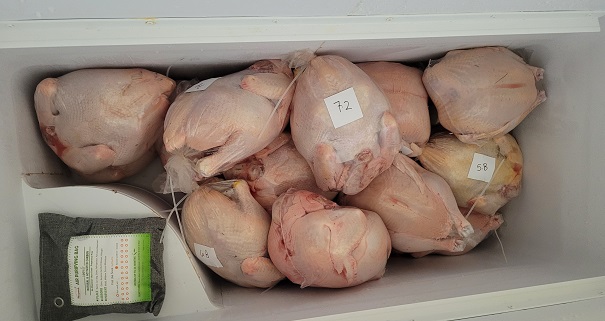Storage of a cow, half or even quarter can be tight! So how can you still get started with sourcing your own meat for your family with space restrictions. Maybe your restrictions is space in a town setting? We have been there and can help! Here is our journey raising meat for our family to help you on the way!
Before jumping in with any meat animals do watch some processing videos on YouTube. The animals will get to a size for processing and you must be ready for the exit plan else you have a new pet…or pets.
Rabbits
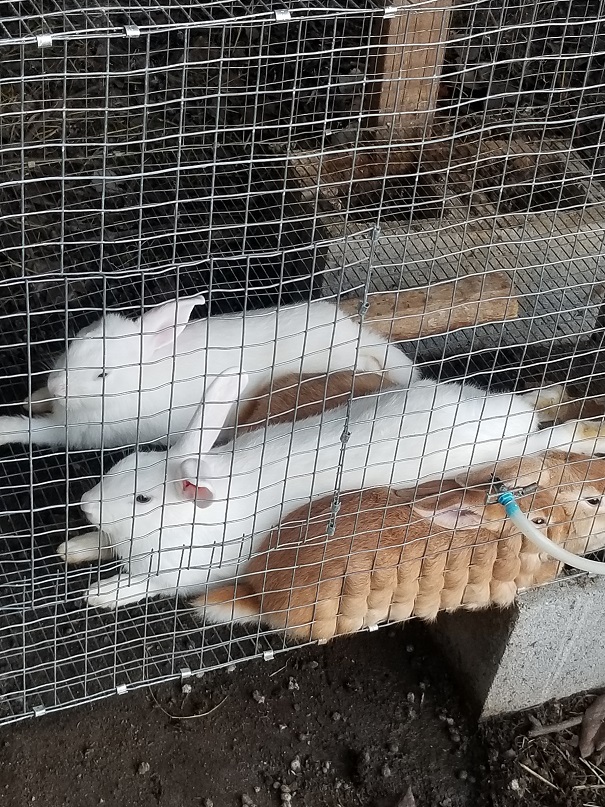
These quick growing power houses were a wonderful source of meat for more than two years while we were living in the city. I have a whole post detailing more on the rabbit system we implemented.
There are many benefits to raising rabbits for meat. Rabbit is said to have low cholesterol levels which I jumped on as I was on high cholesterol medicine from a young age. Rabbit is very expensive at the butcher or grocery store which was all the more reason to raise it yourself!
Each rabbit dressed out to only a few pounds making storage easy. We started deboning most of the meat and grinding the bits for storage in 1lb bags. This was extremely time consuming though it did give us a different option to substitute ground beef or turkey. The final year I went with the much quicker freezing and canning. We packaged the hind legs for use similar to chicken drumsticks, amazing on the grill. The rest of the meat would go into a roaster for cooking and subsequent canning! Much smaller and easier to store.
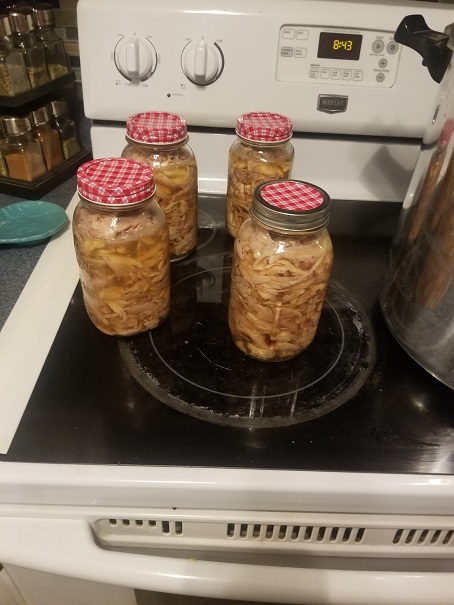
To give a full picture there were some negatives.
I had a mom who didn’t birth the kits in a nest and trampled the kits. There was also a couple first time moms who ate her kits. We gave first time a pass since it likely was our own error in protein for their diet. If the trait went into a second litter then she was culled. I only had a mom eat her kits a second time once over the course of 5 different does we used as moms.
Butchering on our rotation resulted in monthly processing. This was smaller batches than an earlier system where I had all the litters together and we would spend a day once every couple months processing. I began to prefer the shorter small secession and it worked well for the roaster space I had. We would run the pressure canner once and be done.
Lots and lots of poop. This is both great and a challenge. Check out our post on poop management. Improper management stinks as we learned!
Chicken
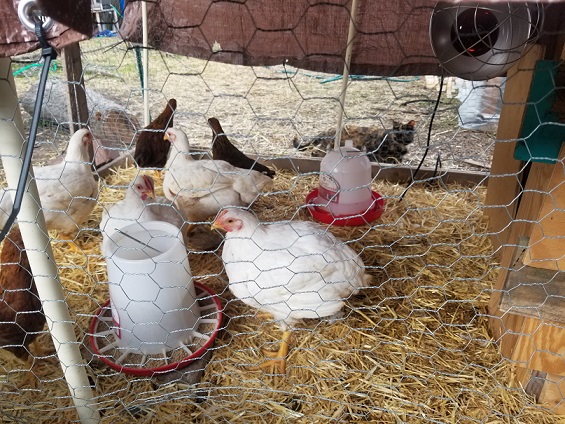
Meat chickens are great! Jumping in with an order of 100 may be a bit scary though. In our backyard homestead days freezer space for such a big endeavor was nil and we would have been tight pressed to have so many birds on a small in city property.
I have raised both Cornish Cross and dual purpose breeds. The dual purpose were bought as straight run (not sexed and cheaper per bird) and we sent the roosters to the freezer once they crowed. Issues I encountered with straight run chicks were potentially being exposed for having chickens with roosters crowing, having to process them at the time of crowing, and smaller size! For a backyard settings I recommend the Cornish cross.
If you are getting new egg layers I recommend brooding a few Cornish Crosses or a dual purpose breed at the same time. Just watch the food as the Cornish Cross chicks are bullies around the feeders. We successfully used this plan 3 times with as many as 10 Cornish.
For our backyard homestead we did not use a chicken tractor. Instead we let them run free with our egg layers. This allowed for foraging and fresh greens while not adding another chore or building more enclosures in our small yard. The growth rate was slower with the added exercise these birds were getting.
Processing the first few chickens was an experience. The very first one I dry plucked…and took what seemed forever. The following four I skinned which was much easier though the feathers that did get loose created a mess. Round 2 with 10 birds we got a stock pot and a propane burner. Scalding the birds was a game changer! Around 150 degrees and dip the birds till the large flight feathers on the wings easily pop out. Be careful not to over scald or the skin will tear while plucking. Our plucking was done by hand due to so few birds being processed at any one time.
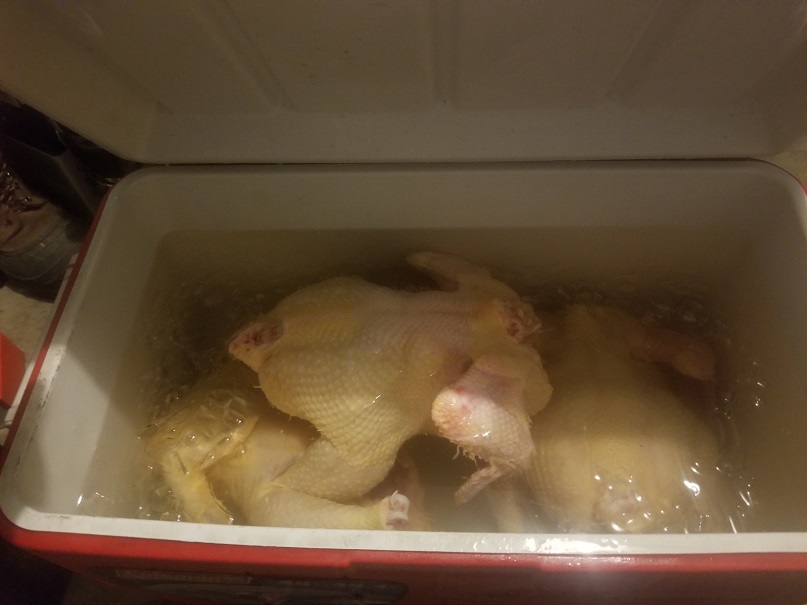
Where are we now with 50+ birds being our processing day? A Yard Bird chicken plucker is the path we chose. I also recently upgraded to a two element heating fiberglass scald tank. Overall we have done about 100 birds in the mechanical plucker and the time saved is crazy. I recommend the investment if you plan to continue processing birds for years to come.
The stewing hen is another possible source of chicken meat. Once your old layers have been replaced the old birds can still serve an amazing delicious purpose. These old layers are called stewing hens because they need to be stewed to soften the tough well build muscles from years of activity. We have processed our older hens anywhere from 2 to 4 years of age depending on when our new birds started to lay and ability to catch the wiser old birds! I have tried to smoke a stewing hen like a younger bird…and the result was not edible. For this reason we place all stewing hens in roasters and can the meat right away vice freezing whole like the ones we process for meat within 6 months of hatching.
Duck
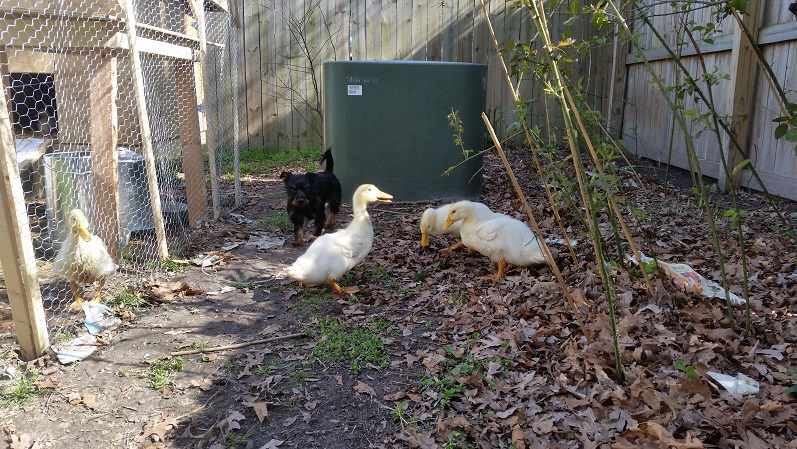
Our first birds bought were ducks with the intention of eggs and garden pest control. Then all 4 of the pekins were males so…the first poultry we processed was duck.
Our second ducks processed were some amazing layers but extremely loud quackers making noise that was bound to get us in trouble with the neighbors. So to the freezer those 3 went also. This likely saved our urban homestead for the next 3 years as we were only a year into the venture at this point.
Eventually we discovered the muscovy duck breed. I have a post all about the benefits of this breed, especially for those wanting ducks in an urban setting.
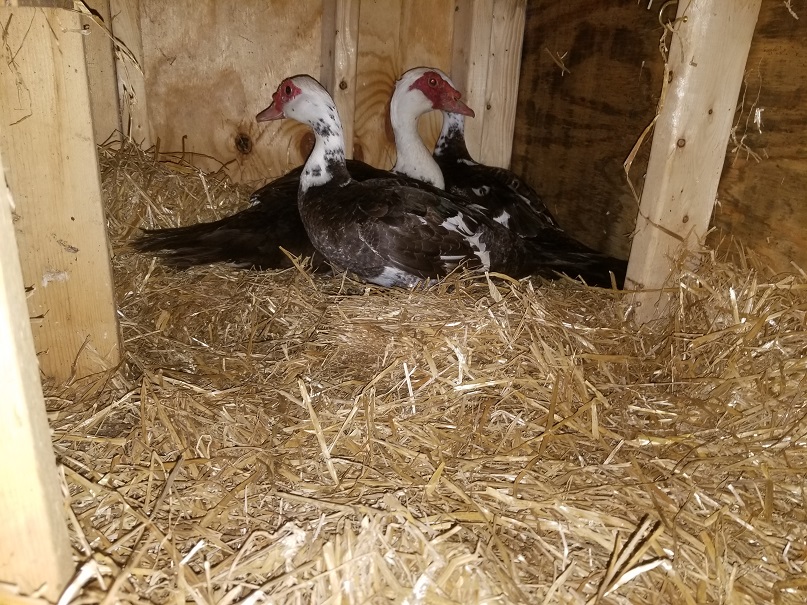
Traditional ducks have a large amount of fat which is often desired for cooking. We plucked a couple but this was a great challenge. I resorted to skinning our ducks and doing more basting while cooking. Much less time consuming for me. The downside was losing that fat under the skin. Even with the mechanical plucker I have not had much luck plucking duck feathers. Future attempts do include the use of paraffin wax which I have watched videos and seems to work well!
The muscovies have much less fat, of which I have predominantly skinned the drakes. In sustainability this bird is my favorite we have barely bought any but have processed dozens of drakes and eat loads of eggs each year. Our incubator has never hatched muscovies because the ducks have all the natural mothering instincts. This bird is a sustainable homestead dream come true, producing eggs and meat with little input. Just watch out for the claws and keep the wings clipped.
Quail
Quail are small and easy to care for. The foot print they occupy is super small making them ideal for small backyard set ups. The eggs are easy to incubate and they are prolific if you keep a decent balance. We found 1 male to 5 females to be good with great fertility and hatch rates.
Quail were only at our Chesapeake homestead for a year and a half though we got great experience since the life cycle is very quick. We hatched multiple generations, processed dozens of the little birds and ate so many hard boiled quail eggs.
Processing quail is quick and easy to learn. The only tool required is a good pair of kitchen shears. We watched a couple you tube videos and googled a recipe and were off! The first 10 birds took only an hour but we cooked almost every one of them that day. Future rounds we froze multiple birds in gallon freezer bags. There is less meat to quail than rabbits so it takes a lot more to make a meal.
For replacements a quality incubator is a must. The eggs hatch quick with a 14 day turn around and another 8 weeks till the newly hatched start to lay or are big enough to process. Brooding is much the same as chickens and we did not require any new specialized equipment.
Small scale meat
Meat is a major piece of a grocery budget, especially if you are going for higher quality. You are able to know where your meat comes from, what went into it, and how it’s one bad day occurred for a reasonable price and some effort. The effort does become easier with experience. You will quickly see the time it takes to processes each animal reduce!
